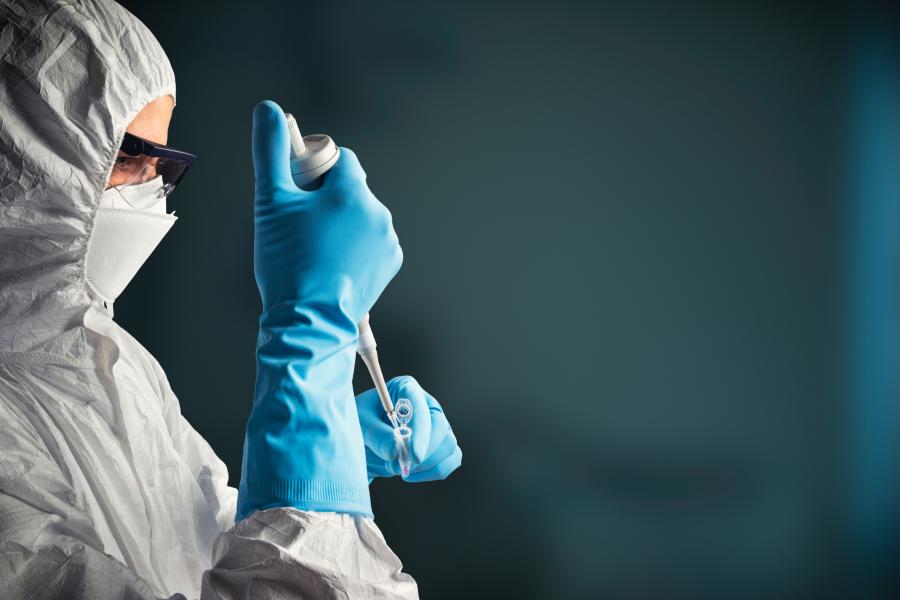
America’s R&D Leadership Is in Peril – Here’s How We Can Save It
America’s R&D infrastructure enabled us to win the Cold War, put a man on the moon, connect us to the internet, and become the most technologically advanced nation in world history. Recently, America’s R&D leadership has been on full display in the effort to combat COVID-19. The private sector is leading and, in many cases, collaborating with academia and the public sector on advanced pharmaceuticals like the COVID-19 vaccines. Pfizer and Moderna, for example, developed and deployed a vaccine in less than a year. That would not have been possible without the long-term R&D efforts by life sciences companies, or the short-term laser focus by a unique partnership of the federal government, the private sector, and academia.
The Pfizer and Moderna vaccines are based on a new technology called mRNA that allows a person’s RNA to produce a vaccine. Researchers at University of Pennsylvania, Katalin Kariko and Drew Weissman, spent over a decade conducting research on synthetic mRNA and published the findings in 2005. This foundational research inspired the founders of Moderna to use mRNA for medicines and raised $2 billion on the concept before going public in 2018. Soon after the world became aware of the COVID-19 virus, Moderna researchers used the mRNA technique to create a vaccine and was one of the first drugmakers to develop a vaccine suitable for clinical trials. Operation Warp Speed, through funding appropriated by the CARES Act, provided Moderna with $2.58 billion in two grants to facilitate development of their vaccine. Beyond COVID-19, this treatment can be revolutionary in treating other diseases, such as cancer and chronic conditions, that impact millions of Americans.
This also took an all of Nation approach. As of today, there have been 1,130 clinical trials in all 50 states and in 97% of congressional districts. The story of the vaccines illustrates how basic federal funding – for either R&D or the medicines themselves – paired with private sector expertise can lead to game-changing medical innovations in record time.
Yet, despite these successes, U.S. leadership is no longer assured. China, the European Union and others are intently focused on dislodging the United States from its leadership position at the commanding heights of global innovation. China, in particular, is rapidly investing in R&D, endeavoring to build self-sufficiency in foundational technologies, and achieve absolute dominance in emerging technologies and industries of the future. Since 2000, U.S. R&D spending has grown by 4.3% annually, while Chinese spending has grown by 17% annually.
The COVID-19 pandemic has demonstrated glaring vulnerabilities in our national research enterprise, which if not addressed, will pose a long-term risk to U.S. competitiveness. America’s national research enterprise, a historically world-leading network of federal agencies, colleges and universities, and industry labs, has not remained untouched by COVID-19. While researchers worked tirelessly to combat the pandemic, it has affected universities’ ability to conduct research through reduced physical access to university laboratories, paused on-going research, and led to staff reductions, among other significant impacts. Over the long term, and without a course correction, the impacts of COVID-19 on academic research will have negative ramifications on America’s economic competitiveness.
Concrete bipartisan actions can reverse these negative trends, support our national research enterprise during the pandemic, and leverage R&D to support the long-term competitiveness of the United States. Congress must:
- Enact the RISE Act to mitigate the impact of COVID-19 on our national research enterprise and lay the foundation for future discoveries and innovations.
- Ensure that recently-enacted R&D legislation, including the National Artificial Intelligence Initiative Act, CHIPS for America Act, and the Energy Act of 2020, are fully funded.
- Increase funding for the Technology Modernization Fund and other programs in order to digitally transform government. Modernizing government platforms will enable greater real-time collaboration between government and the private sector and strengthen the federal government’s research capacity.
- Identify additional opportunities to establish new programs or strengthen existing programs to reverse the decline in federal investments in R&D, with a particular focus on basic research.
- Maintain the ability to immediately deduct R&D expenses.
- Enable private sector R&D investment through a recommitment to the predictability and reliability of the U.S. patent system.
The Senate may also take up a large R&D bill as part of a broader economic competitiveness package over the next several weeks. We hope to work with the Senate leadership to develop a proposal that helps to preserve U.S. global R&D leadership.
These steps will be critical for the United States to remain a leader in areas such as semiconductors, while establishing a commanding position in areas such as artificial intelligence and quantum computing. In doing so, we can recover from the impacts of the pandemic and lay the foundation for the United States to lead the industries of tomorrow.
About the Author

Tom Quaadman, Executive Vice President, U.S. Chamber Center for Capital Markets CompetitivenessSenior Advisor to the Senior Executive Vice President
Tom Quaadman develops and executes strategic policies to implement a global corporate financial reporting system, address ongoing attempts of minority shareholder abuse of the proxy system, communicate the benefits of efficient American capital markets, and promote an innovation economy and the long-term interests of all investors.
The Weekly Download
Subscribe to receive a weekly roundup of the Chamber Technology Engagement Center (C_TEC) and relevant U.S. Chamber advocacy and events.
The Weekly Download will keep you updated on emerging tech issues including privacy, telecommunications, artificial intelligence, transportation, and government digital transformation.
